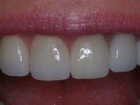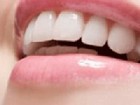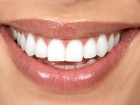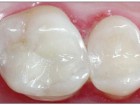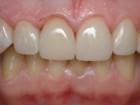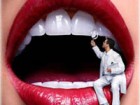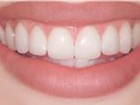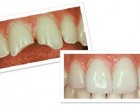Tooth restoration
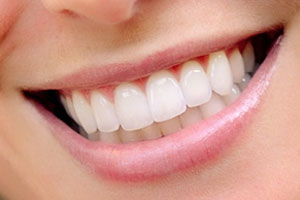
Having a beautiful smile has always been a sign of health.
However, not all people can boast of beautiful teeth that have no defects.
Dental restoration is a service that is very popular in our time.
Aesthetic dentistry allows you to solve problems such as changing the shape of the tooth, its length, width, hiding chips and other imperfections, aligning teeth in a row.
What is tooth restoration
Tooth restoration is understood as the process of restoring the shape and functionality of damaged teeth.
If we are talking not only about tooth restoration, but also about the aesthetic component, then such terms (synonyms) as artistic restoration, cosmetic restoration or aesthetic restoration of teeth are applicable.
Dental restoration is a dental manipulation aimed at both improving the appearance and bringing the teeth to the physiological state as close as possible.
- The purpose of restoration is to optimize the color and shape of the tooth so that the restored tooth does not differ from other teeth.
- During restoration, the correction and restoration of functionality and aesthetics are carried out using composite materials directly in the patient's oral cavity or outside it.
- Restoration of a tooth differs from the installation of a filling in that tooth restoration is performed with modern aesthetic materials that allow you to simulate enamel and dentin in the desired transparency and color scheme.
Indications and contraindications
Dental restoration is carried out in the following cases:
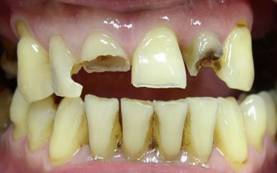
- Correction of the shape, color and size of the tooth.
- If the tooth has changed its position in the row.
- If the patient has crooked teeth.
- After treatment of caries, pursuing restoration of aesthetics of a tooth
- With darkening of enamel and the presence of pigmentation.
Some contraindications include restoration:
- The presence of allergies to composite material or adhesives for it.
- If it is impossible to isolate the tooth and its cavity from moisture.
- The combination of pathological abrasion of teeth and a direct bite.
- Bruxism.
- Deep incisal overlap.
- Poor oral care or lack thereof.
Various restoration methods and techniques teeth can solve the following problems:

- Correct the shape of the tooth.
- Eliminate chips and bumps.
- Restoration of tooth enamel.
- Hide the gap between the teeth.
- Align tooth position in a row.
Modern restoration of primary teeth
Teeth of children also often need restoration.
This procedure will help protect the baby tooth from further decay and premature loss.
Restoration of primary teeth is applied if:
- There is tooth decay with caries and defects must be hidden.
- There were tooth injuries.
- In the presence of chips, enamel cracks.
The advantages of the restoration of primary teeth include:
- Preservation of the health and functionality of the tooth up to its permanent change.
- The ability to practice speech skills in a child.
- Prevention of malocclusion.
- The ability to fully chew food.
- Psychological comfort and lack of complexes.
Methods
Depending on the condition of the patient’s teeth, the following can be used:
- Direct recovery. For direct restoration, all manipulations in the patient’s mouth are typical during one medical visit.
- Indirect tooth restoration method. Most reconstructive procedures are performed outside the oral cavity.
Direct method of restoration
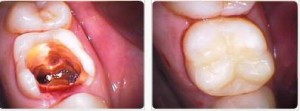
To restore the crown of the tooth, a composite tooth restoration is used, which involves the use of photopolymers (light-cured composite materials): composites, compomers, heliocomposites, nanocomposites.
- Composite filling materials are held by chemical bonds with enamel due to glue (adhesive).
- Compomers additionally emit fluoride, which helps to strengthen enamel.
- Heliocomposites allow you to select the desired color and recreate natural light transmission.
- Nanocomposites are able to imitate the optical properties of tissues.
Tooth restoration with photopolymers carried out by a dentist and is often called artistic restoration of teeth.
Life time
No dentist can say how long such a restoration lasts, since for each patient this period is individual.
- It depends on oral care, the presence or absence of bad habits, etc.
- If the diet consists of food, mainly of plant origin, the restoration will last long.
- A great role is also played by the professionalism of the dentist and compliance with all the norms and rules of the installation.
The average life of a light seal is five years, but may be longer.
Other methods of direct restoration:
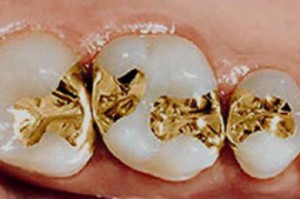
- Set tabs.
- With large losses of dental tissue, the installation of pin structures is most often used.
On their basis, a new tooth is formed in the future.
- Before fixing the pin, the root canal is prepared.
- Then the pin is fixed in the root cavity with the help of special cement or with the use of modern adhesive materials.
- The most popular are anchor, titanium, fiberglass, silver pins.
Stages
The main stages of tooth restoration are distinguished:
- Preparatory. At this stage, professional cleaning of teeth is carried out, the color of the future tooth is determined and, accordingly, the shade of the composite material that will be used during restoration is selected.
- If necessary, local anesthesia is performed.
- The tooth tissues affected by caries are drilled. In case of replacement of the old restoration, the old seal is drilled and replaced with - a new one.
- The tooth is isolated from saliva with a cofferdam, a latex scarf that is worn on the teeth through special openings. Restoration made from a composite without reliable isolation from saliva is not able to last for a long time, and can cause problems such as: the appearance of a dark strip or the formation of caries at the border of the filling-tooth, as well as the loss of restoration.
With large losses of dental tissue, the installation of pin structures is most often used. On their basis, a new tooth is formed in the future. The most popular are anchor, titanium, fiberglass, silver pins.
- Before fixing the pin, the root canal is prepared.
- Then the pin is fixed in the root cavity with the help of special cement or with the use of modern adhesive materials.
- Restore tooth shape. In order to make the tooth look like a real layer-by-layer restoration technique is used. The composite layers of different shades and transparency are successively applied. Which ultimately gives the new tooth a natural look.
- The final shaping of the tooth with the help of burs, grinding and polishing fillings.
Video: “Tooth restoration during caries”
Indirect way
Indirect restoration of teeth is prosthetics. Performed by an orthopedic dentist.
Indirect restoration is characterized by the use of orthopedic structures:
- Production of records (veneers).
- Fixation of crowns.
- Replacing missing teeth (installing bridge-like structures).
The most aesthetic, among them, are veneers. The restoration of veneers is characterized by coating the front surface of the teeth with micro prostheses.
With the help of plates, an ideal restoration is easier than with composite materials.
Stages of the restoration of veneers
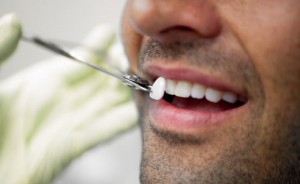
- The color of the future veneer is selected.
- Local anesthesia is performed (if necessary).
- The front surface of the tooth is turned. The number of tissue removed depends on the clinical case. Stitching from 0.5 to 1.5 mm of hard tissue.
- Taking casts.
- Fixation of temporary plates made of plastic during the manufacture of permanent restoration. This measure is necessary to protect the turned surface of the tooth from infection and the negative effects of environmental factors.
- Production on the obtained casts in the conditions of a laboratory of a vinyl lining.
- Fixing veneer on a tooth with a special glue.
Does it hurt?
Modern medicine is able to minimize all pain during treatment to a minimum.
Aesthetic restoration does not imply a rehabilitation period. Therefore, the consequences of the restoration can cause only slight discomfort in the place of fixation of the veneer, but it will last only a few days.
disadvantages
Restorations have some disadvantages:
- Composite fillings can darken and change color over time. In addition, they can lose the luster that is characteristic of real teeth. If the restoration was carried out on the front teeth, then this trouble will significantly affect the aesthetics. Therefore, it will be necessary to replace such restorations once every several years.
- The possibility of breakage. Risk factors are depulped teeth, as well as restored completely from the root. In the event that the chewing load on the tooth is exceeded, tooth fracture or a root fracture may occur. And then you have to remove the tooth.
Photo: before and after
 |
 |
 |
 |
 |
 |

